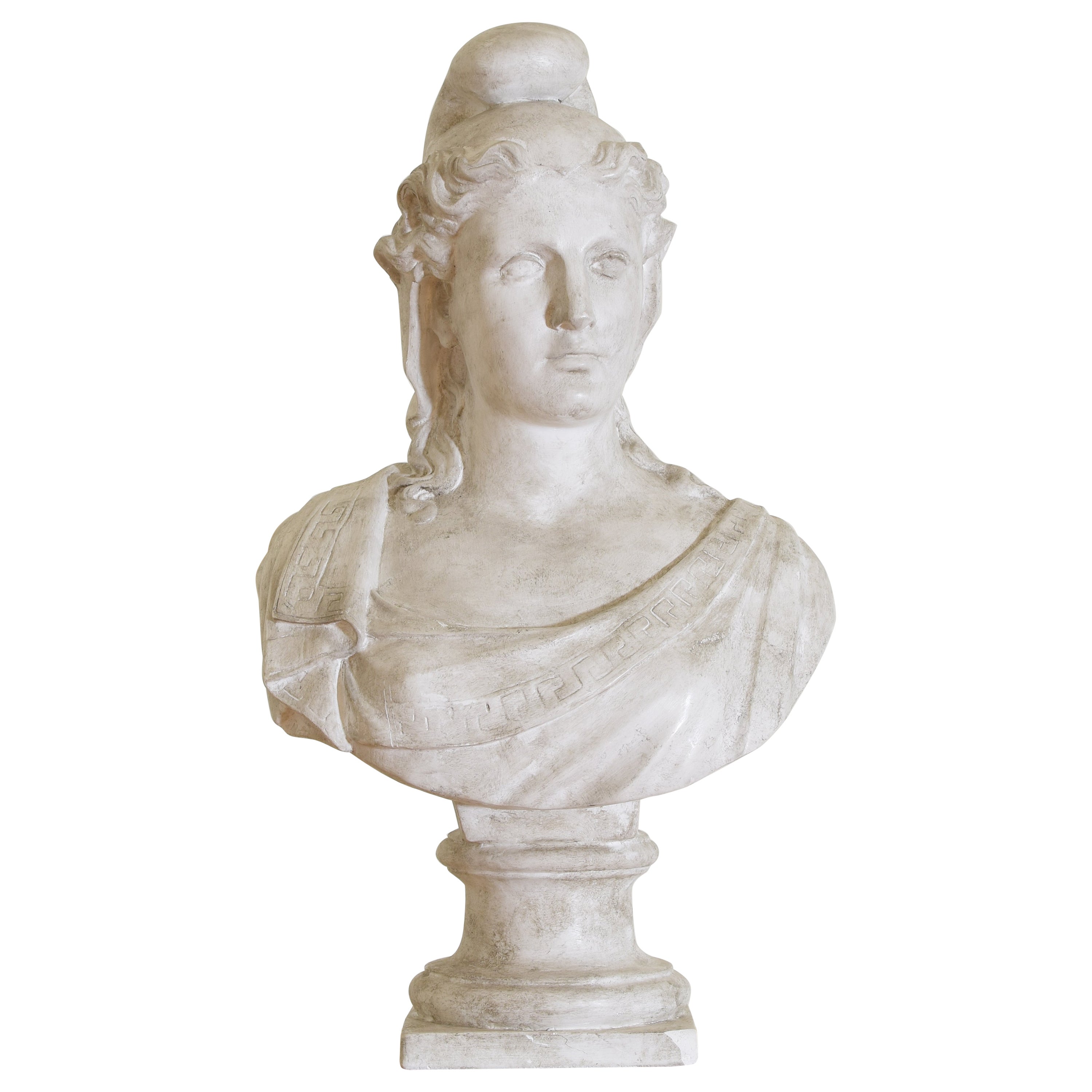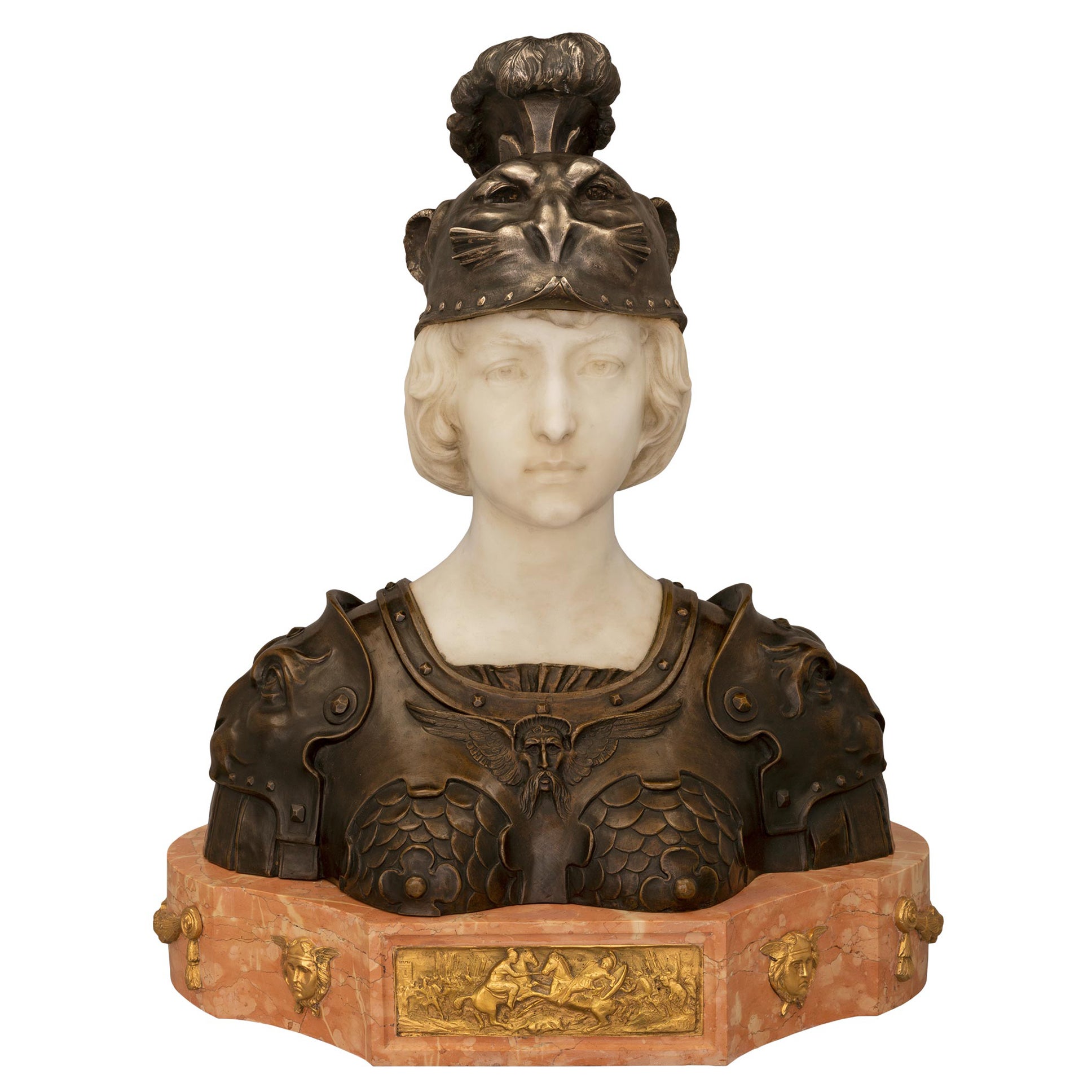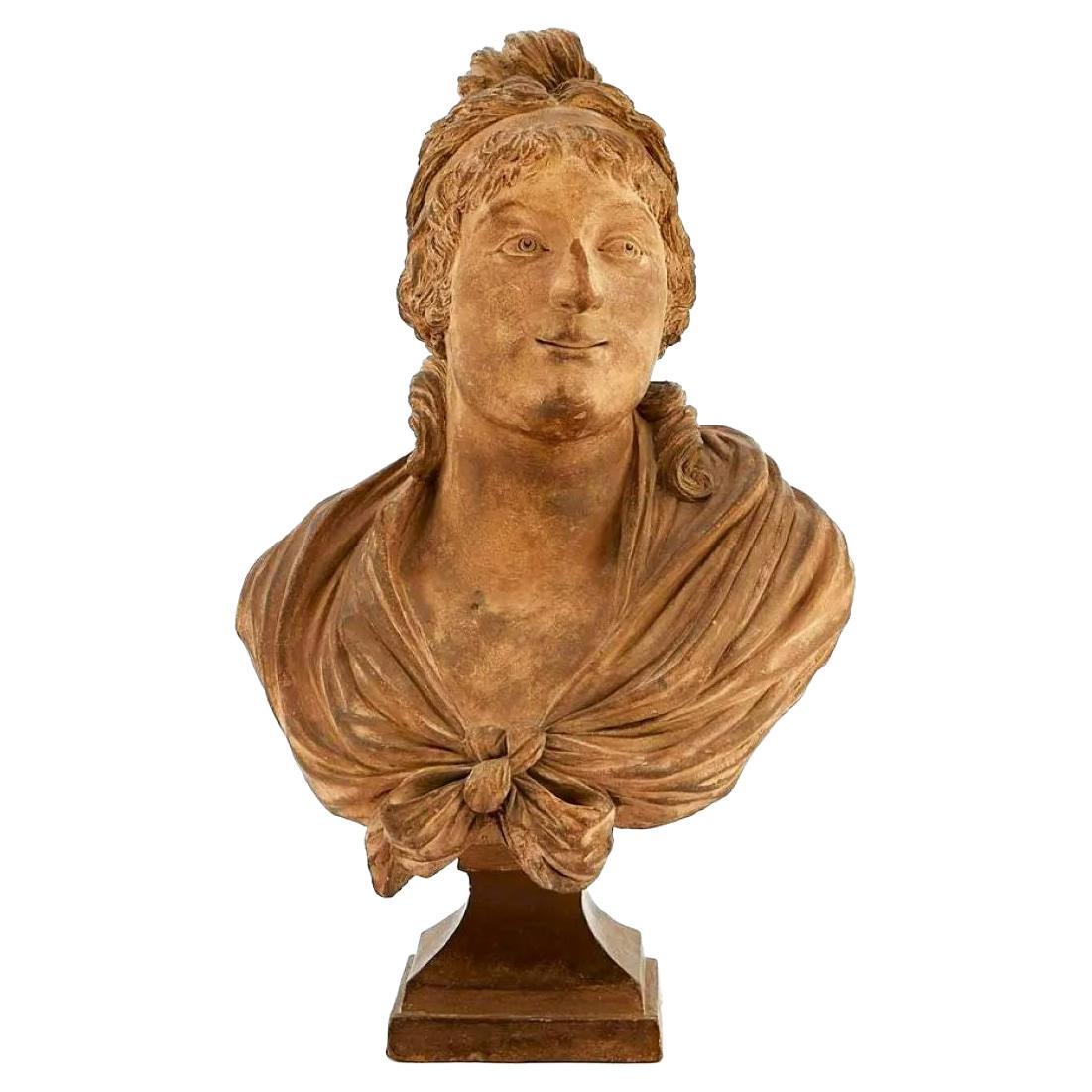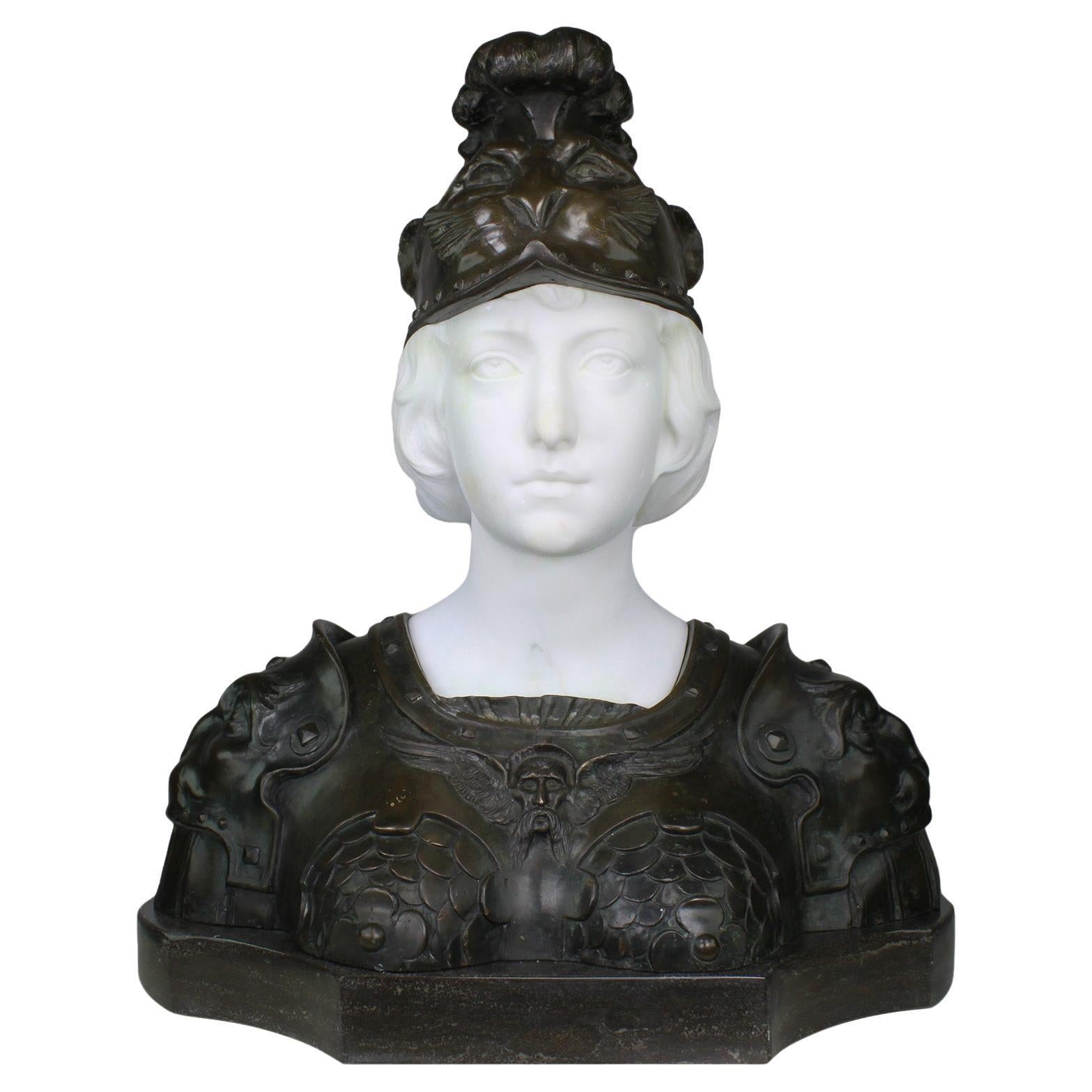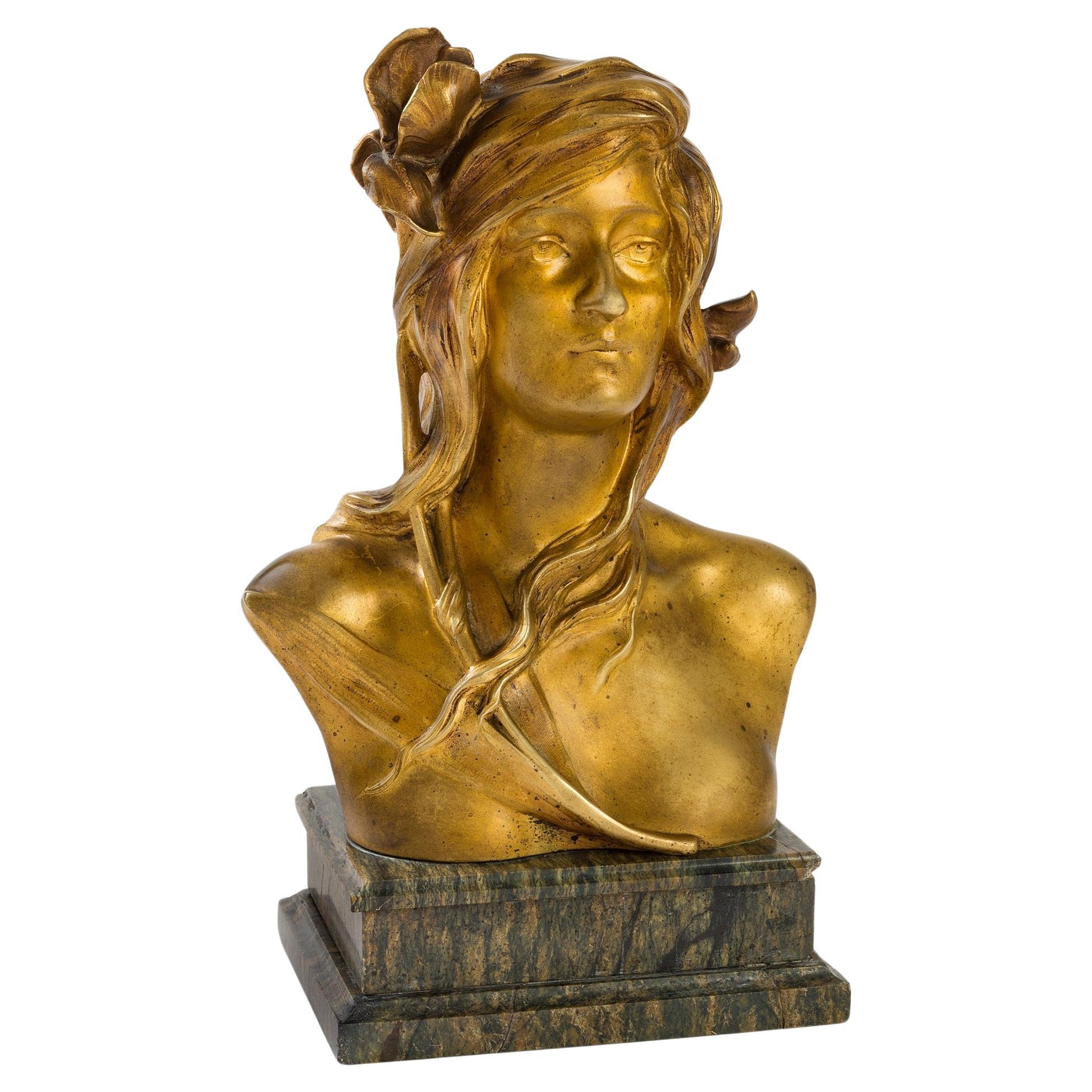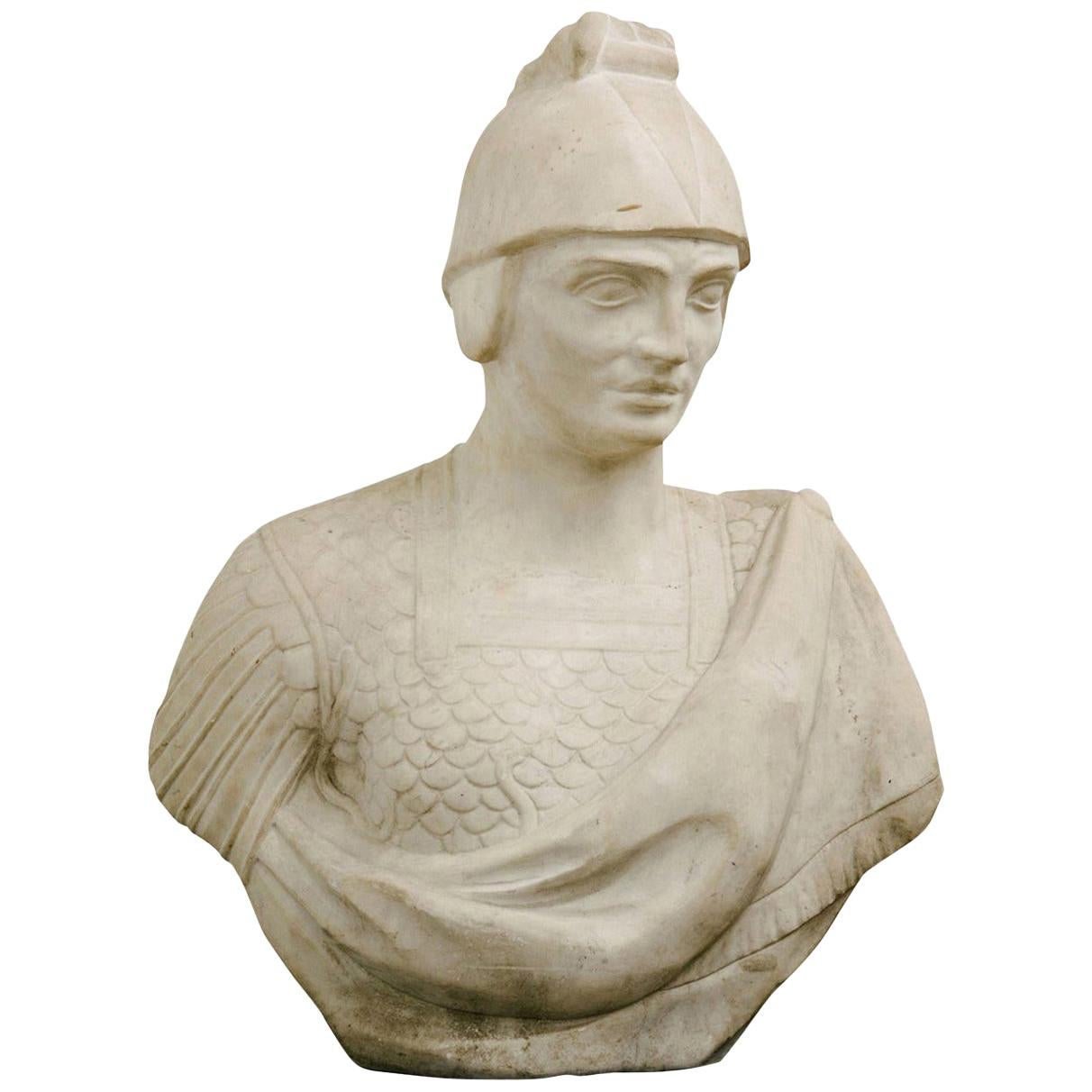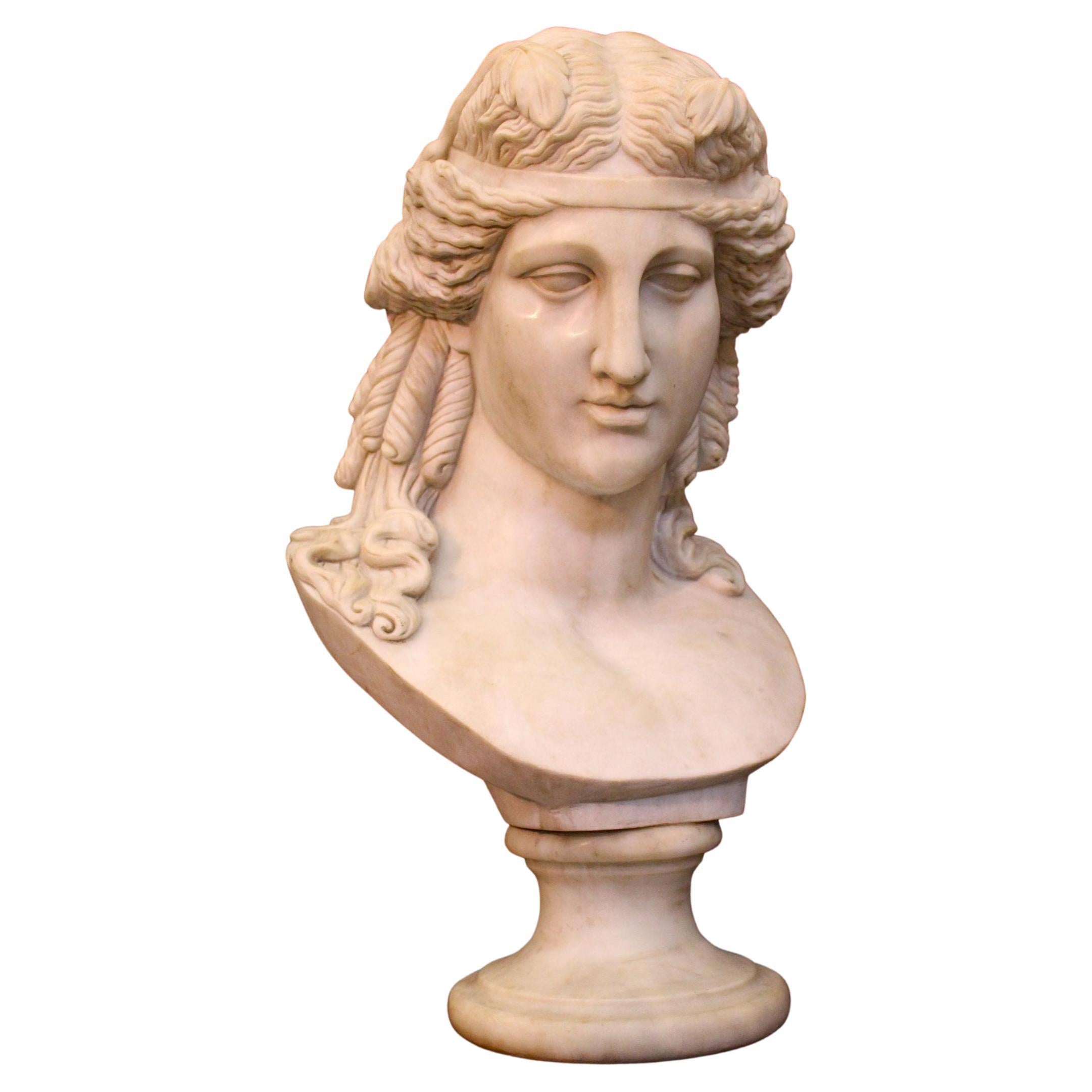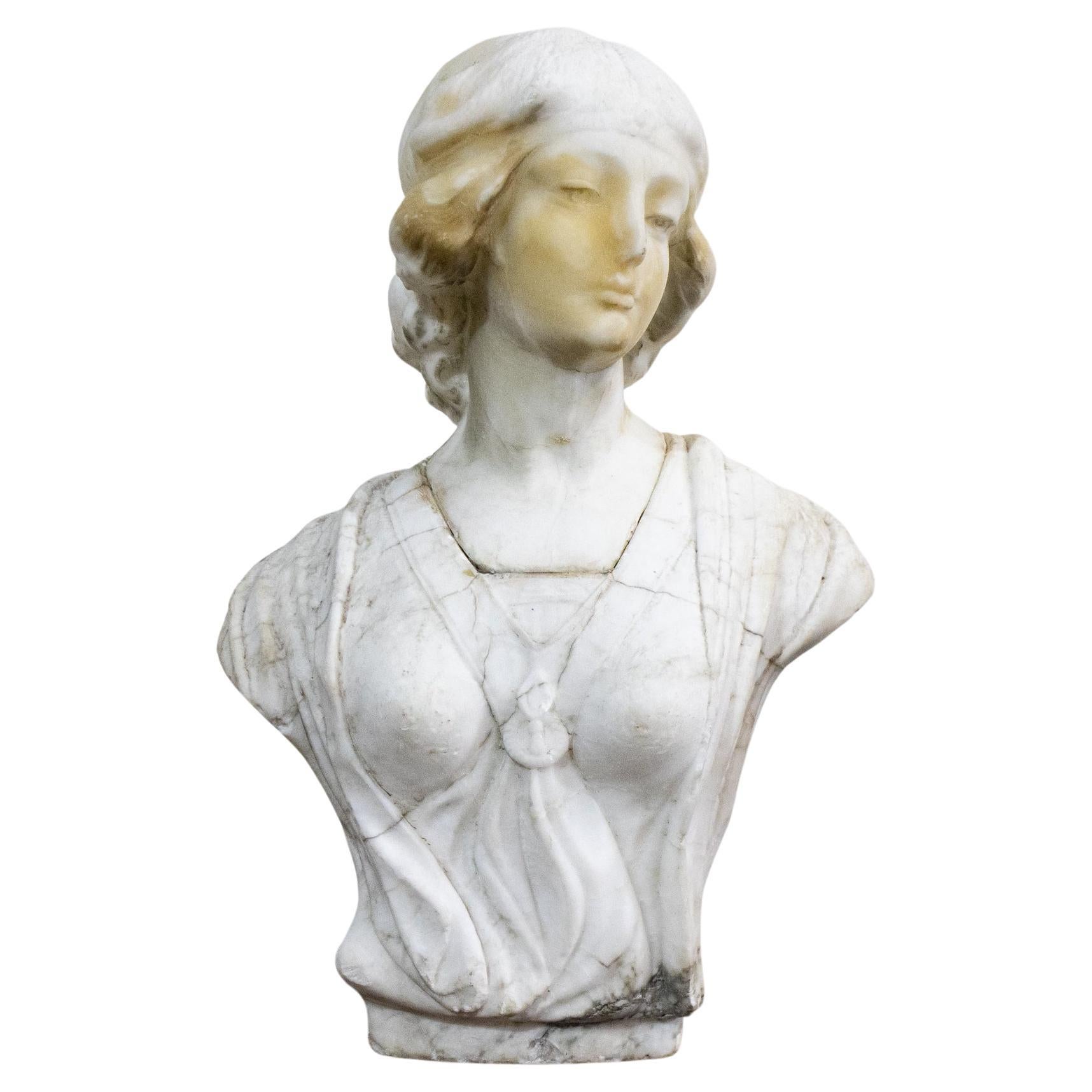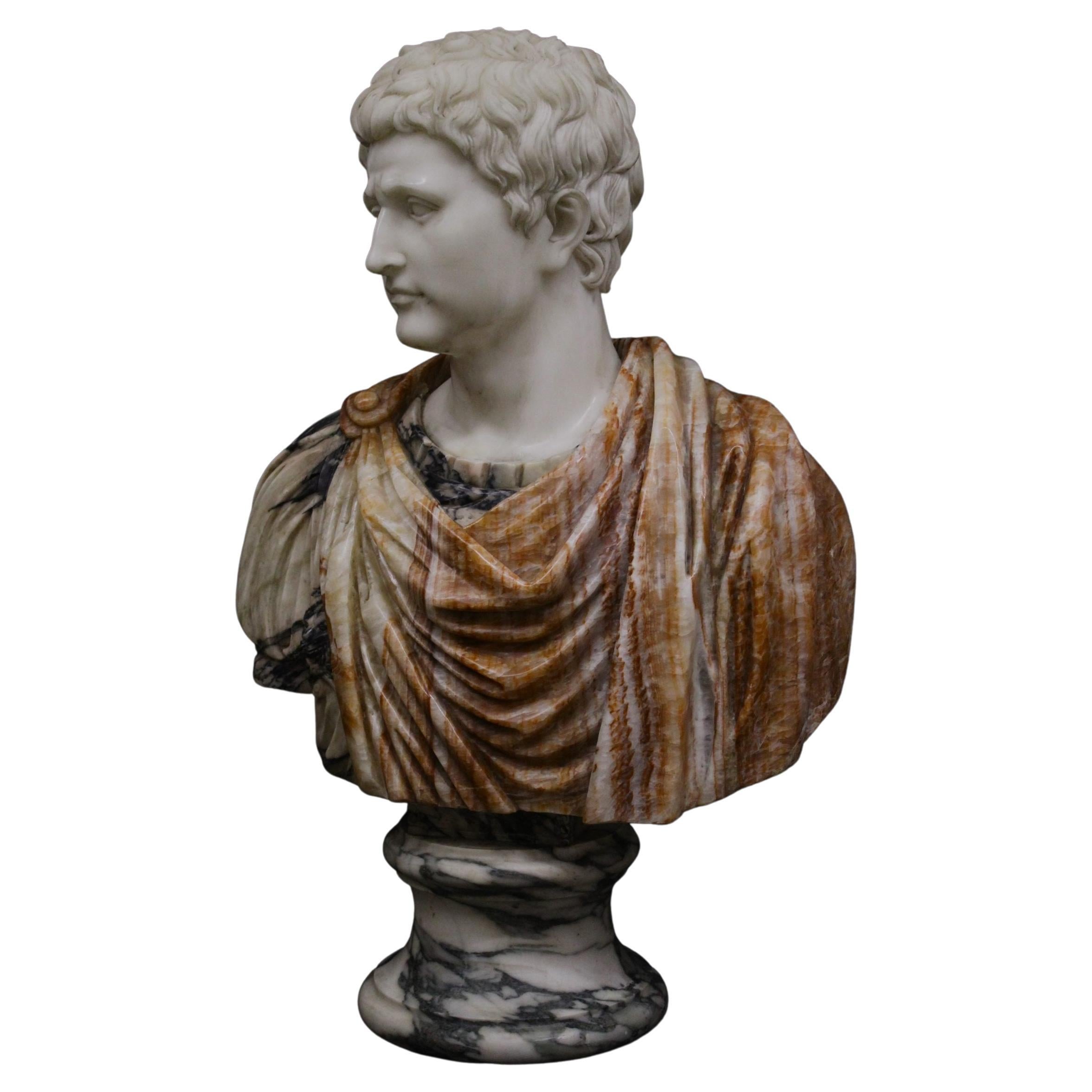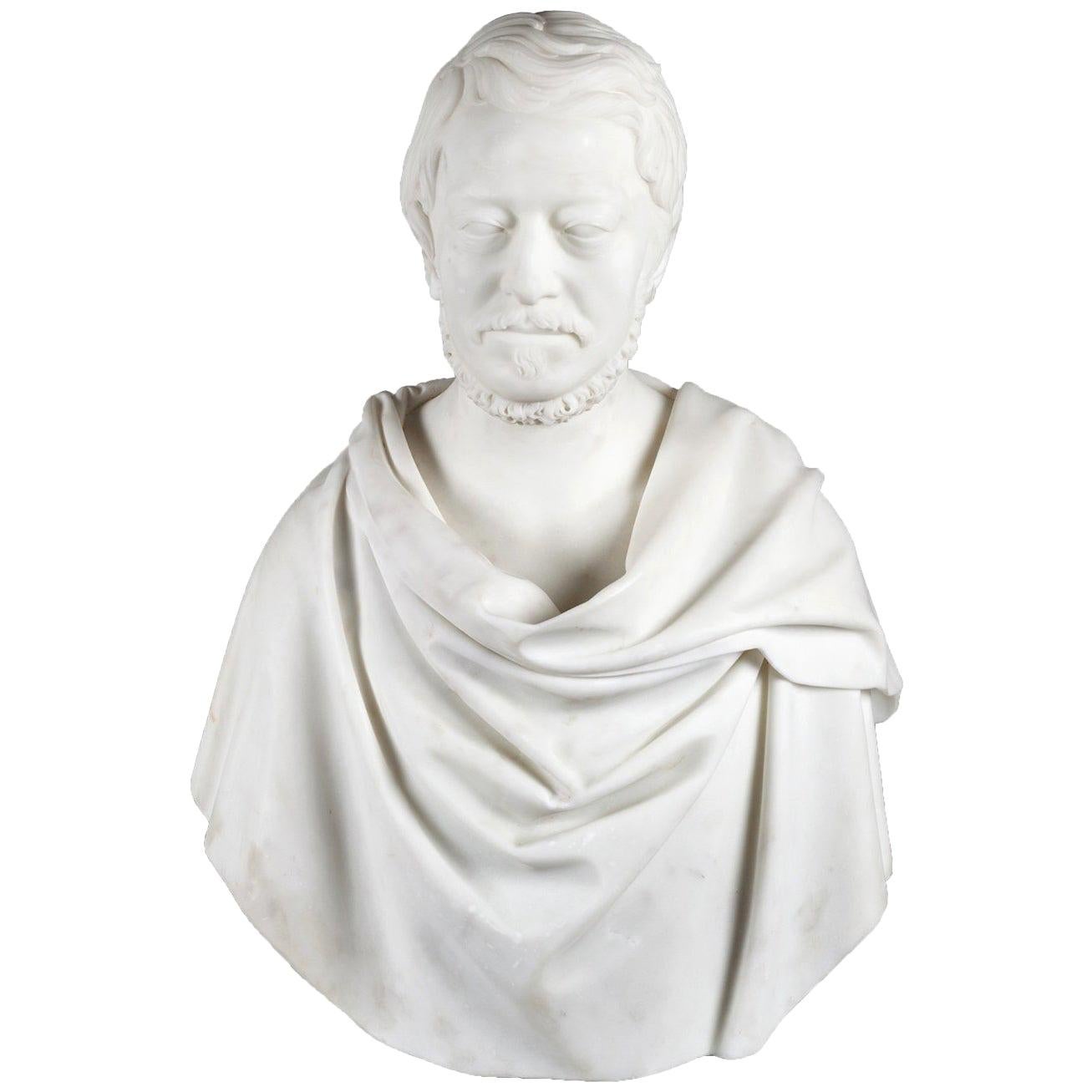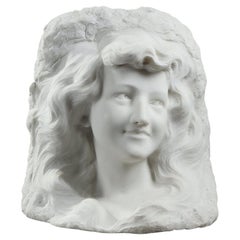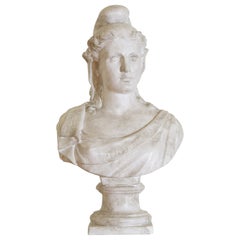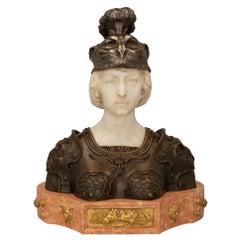
Marble Bust: Cosette With Marianne's Phrygian Cap
View Similar Items
Video Loading
Want more images or videos?
Request additional images or videos from the seller
1 of 16
Marble Bust: Cosette With Marianne's Phrygian Cap
About the Item
- Dimensions:Height: 20.87 in (53 cm)Width: 14.57 in (37 cm)Depth: 7.88 in (20 cm)
- Style:Art Nouveau (Of the Period)
- Materials and Techniques:
- Place of Origin:
- Period:
- Date of Manufacture:1900
- Condition:Wear consistent with age and use. In overall very good condition.
- Seller Location:Paris, FR
- Reference Number:Seller: 28081stDibs: LU2065322064482
About the Seller
4.9
Gold Seller
These expertly vetted sellers are highly rated and consistently exceed customer expectations.
Established in 2001
1stDibs seller since 2016
302 sales on 1stDibs
Typical response time: 3 hours
More From This SellerView All
- Bust of a young woman in Carrara marble, 19th centuryLocated in Paris, FRDirect carving of a portrait of a smiling young woman in white Carrara marble from the Art Nouveau period. The sculptor uses a clever technique to bring out the face, allowing the fi...Category
Antique 1890s French Art Nouveau Busts
MaterialsCarrara Marble
- Carrara Marble Bust of Juliette Récamier after Joseph ChinardBy Joseph ChinardLocated in Paris, FRLate 19th century neoclassical bust of Madame Récamier crafted of white Carrara marble after the French sculptor Joseph Chinard. Married at the age of 1...Category
Antique Late 19th Century French Neoclassical Revival Figurative Sculptures
MaterialsCarrara Marble
- Small Bust Representing a Young Boy in AlabasterLocated in Paris, FRSmall alabaster bust representing a young boy wearing a drape. This very lively statuette shows him talking while turning to the left. This fine sculpture individualizes the child's hair strands...Category
Antique 1880s French Busts
MaterialsAlabaster
- Alabaster bust of a young woman, signed CyprienLocated in Paris, FRAlabaster sculpture of a bust of a young woman with her hair held in a kerchief. Signed on the back: A. Cyprien.Category
Antique Early 1900s French Busts
MaterialsAlabaster
- 20th Century Marble Figure, Putto with Springs of WheatLocated in Paris, FRLarge marble figure depicting a young boy sitting on a rock, holding some springs of wheat. Carved in white luminous marble in the late 20th century, this figure is a work of exquisi...Category
Late 20th Century French Neoclassical Figurative Sculptures
MaterialsMarble
- Bronze Bust of "Diana the Huntress" After HoudonBy Jean-Antoine HoudonLocated in Paris, FRSculpture in bronze representing Diana the hunter after Jean-Antoine Houdon (1741- 1828). In Roman mythology, Diana is the goddess of the hunt and of the night, similar to Artemis in...Category
Antique 1890s French Busts
MaterialsMarble, Bronze
You May Also LikeView All
- Plaster Bust of MarianneLocated in Atlanta, GAMarianne is the embodiment of the French Republic. Marianne represents the permanent values that found her citizens' attachment to the Republic: "Liberty, Equality, Fraternity".Category
Antique Late 19th Century Italian Classical Roman Busts
MaterialsPlaster
$1,980 - French 19th Century Neo-Classical St. Bronze, Marble, & Ormolu Bust of MarianneLocated in West Palm Beach, FLA stunning and most impressive French 19th century Neo-Classical st. patinated bronze, silvered bronze, ormolu, Rosso Verona and white Carrara marble bust of Marianne in full armor. The bust is raised by a thick Rosso Verona marble base with an elegant scalloped shape adorned with richly chased masks and swaging berried laurel garlands and centered by a striking fitted ormolu plaque...Category
Antique 19th Century French Neoclassical Busts
MaterialsMarble, Bronze, Ormolu
- Important Terracotta Bust of "Marianne", French Revolution, 1794Located in Doylestown, PAA historically important and early terracotta bust of "Marianne" the French symbol of the French Revolution, by an unknown sculptor named "Gensoul", depicting the young woman in a draped robe with bow and her hair tied-up with a band. This depiction of Marianne is similar to that of the portrait done earlier by artist Jean-Michel Moreau...Category
Antique Late 18th Century French Neoclassical Figurative Sculptures
MaterialsTerracotta
- French 19th Century Bronze and White Marble Bust of Marianne in Full ArmorLocated in Los Angeles, CAA French 19th century bronze and marble bust of Marianne in full armor. The nicely cast Baroque Revival brown patinated bronze and carved white marble figure of Marianne, the allegorical personification of the French Republic, presented in her militaristic guise, reminiscent of Minerva, wearing a Phrygian helmet and armored breastplate centered by winged male mask and with lion shoulder armor pads, all raised on a conforming black marble base. Circa: 1890-1900. Marianne has been the national personification of the French Republic since the French Revolution, as a personification of liberty, equality, fraternity and reason, as well as a portrayal of the Goddess of Liberty. Marianne is displayed in many places in France and holds a place of honor in town halls and law courts. She is depicted in the Triumph of the Republic, a bronze sculpture overlooking the Place de la Nation in Paris, as well as represented with another Parisian statue on the Place de la République. Her profile stands out on the official government logo of the country, appears on French euro coins and on French postage stamps. She was also featured on the former franc currency and is officially used on most government documents. Marianne is a significant republican symbol; her French monarchist equivalent is often Joan of Arc. As a national icon Marianne represents opposition to monarchy and the championship of freedom and democracy against all forms of oppression. Other national symbols of Republican France include the tricolor flag, the national motto Liberté, Égalité, Fraternité, the national anthem "La Marseillaise", the coat of arms, and the official Great Seal of France. Marianne also wore a Cockade and a red Phrygian cap symbolizing Liberty. Minerva and its pendant bust of Mars evoke the classicizing subjects, bust-length formats, and style that originated in France during the reign of Louis XIV (1643–1715) and that concurrently was popularized across Europe. The busts' simple forms, stiff poses, and solemn facial types are consistent with the late Baroque sculptures that were carved in Flanders during this period. In Flanders, especially in Antwerp and Brussels, sculpture and architectural decoration traditionally was carved using combinations of native black marble (noir belge), mottled red marble (rouge belge), and white marble or alabaster. The use of these stones in colorful counterpoint speaks most strongly to the busts’ Flemish origins. The veneration of ideal heroes and heroines in ancient costume and arms took on extravagant form in the 17th century, with countless variations. Within this imaginative tradition, the identification of the pair as Minerva and Mars cannot be certain. The female bust, for example, could be identified as Bellona, Roman goddess of war, who is depicted in 17th and 18th century French paintings wearing flamboyantly plumed helmets and low-cut cuirasses that expose her breasts. Whatever their identities, the female and male warriors are portrayed as calm rather than bellicose beings. The sovereign pair does...Category
Antique 19th Century French Baroque Revival Figurative Sculptures
MaterialsMarble, Bronze
$19,850 Sale Price42% Off - Maurice Bouval "Woman with Iris" Gilt Bronze & Marble BustBy Maurice BouvalLocated in New York, NYMaurice Bouval’s "Woman with Iris" is a nude gilt bronze bust of a woman. The woman’s hair clings to her face and body as if wet. The delicate sloping...Category
Early 20th Century French Art Nouveau Busts
MaterialsMarble, Bronze
- Roman Marble BustLocated in Houston, TXA handsome large Italian marble bust sculpture of Roman soldier from the early 20th century. Measures: 33" tall.Category
Early 20th Century Italian Art Deco Busts
MaterialsMarble
$16,750
Recently Viewed
View AllMore Ways To Browse
White Bust
Antique Caps
Figure Bust
White Marble Busts
Marble Bust Signed
Antique Marble Bust Art Sculptures
Marble Bear
Girl Bust
Bust Of A Girl
Antique Art Nouveau Bust
Antique Art Nouveau Busts
Large Marble Bust
Girl Bust Sculpture
Bear Marble Sculpture
L Bust Marble
Art Nouveau Marble Bust
Marble Bust Girl
Marble Bust Of Girl
